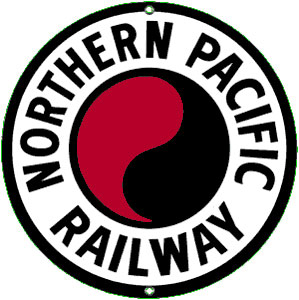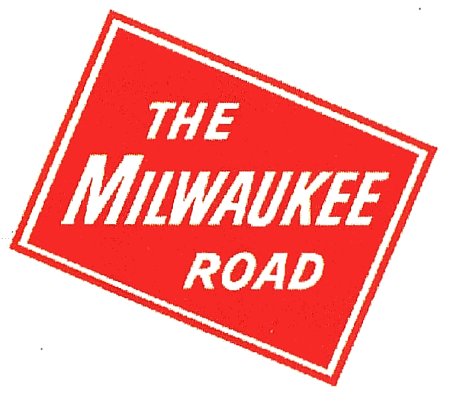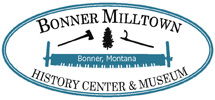 Two railroads crossed the tiny communities of Bonner-Milltown in the early part of the 20th century. The transcontinental Northern Pacific, so deeply tied to A. B. Hammond and the interests of the Montana Improvement Company came through first, stopping at Bonner Depot before hurrying east and west. Its ability to move lumber from the Anaconda Copper Mining Company (ACM) and the Western Lumber Company to Clark’s and Anaconda’s mines and smelters in Butte and Anaconda was vital to the area.
Two railroads crossed the tiny communities of Bonner-Milltown in the early part of the 20th century. The transcontinental Northern Pacific, so deeply tied to A. B. Hammond and the interests of the Montana Improvement Company came through first, stopping at Bonner Depot before hurrying east and west. Its ability to move lumber from the Anaconda Copper Mining Company (ACM) and the Western Lumber Company to Clark’s and Anaconda’s mines and smelters in Butte and Anaconda was vital to the area.
By 1904, the ACM had begun to construct a logging railroad up the Blackfoot River to bring logs from the Blackfoot region more efficiently. Their railroad began by operating Shay locomotives from Greenough to McNamara where the logs were dumped off into the river and floated to Bonner. This rapidly proved more efficient than the long log drives. By 1910 the Big Blackfoot Railway was incorporated and construction began to extend the line all the way to Bonner.
In 1913 the Milwaukee Railroad (Chicago, Milwaukee and St Paul Railroad) purchased the Big Blackfoot Railway from the Anaconda Company and completed the track to Bonner. They brought logs from the logging camps in the Blackfoot to the Bonner mill until the mid-1930s when yet another form of transportation edged its way into the logging scene. Logging trucks could go places the railroad could not and offered even more efficiency. The Chicago, Milwaukee and St Paul Railroad, first known as the Chicago Milwaukee and Puget Sound Railroad, was the second transcontinental railroad to arrive in Missoula. Its route came through on the south side of the Clark Fork in 1909. It built a spur line with a covered bridge across the Clark Fork well above the reservoir, connecting at the mill site to the Big Blackfoot Railway.
The Chicago, Milwaukee and St Paul Railroad, first known as the Chicago Milwaukee and Puget Sound Railroad, was the second transcontinental railroad to arrive in Missoula. Its route came through on the south side of the Clark Fork in 1909. It built a spur line with a covered bridge across the Clark Fork well above the reservoir, connecting at the mill site to the Big Blackfoot Railway.
Men could take it to the logging camps and as people moved up the Blackfoot to settle, the railroad became part of their lives. During World War I, armed guards were stationed at the tunnels and rail bridges in Bonner-Milltown, as they were elsewhere in the country. After the War the increased use of the railroad to move logs spelled the end of the log drives. Year-round movement of the logs meant that the mills could also operate on a year round basis.
There were no guards in World War II, but many a train carried off Bonner-Milltown’s men and women to serve in the Armed Forces. After the Depression, and the increased use of trucks, considerably less timber was harvested in the valley. The Milwaukee track was finally abandoned in 1978, and the bridge, which had had its cover removed in the 1950s, was also removed. (Without its cover, it had been known as the Duck Bridge since hunters often shot ducks from it.) Only the NP track, which is still used used by Montana Rail Link, remains in the 21st century.
